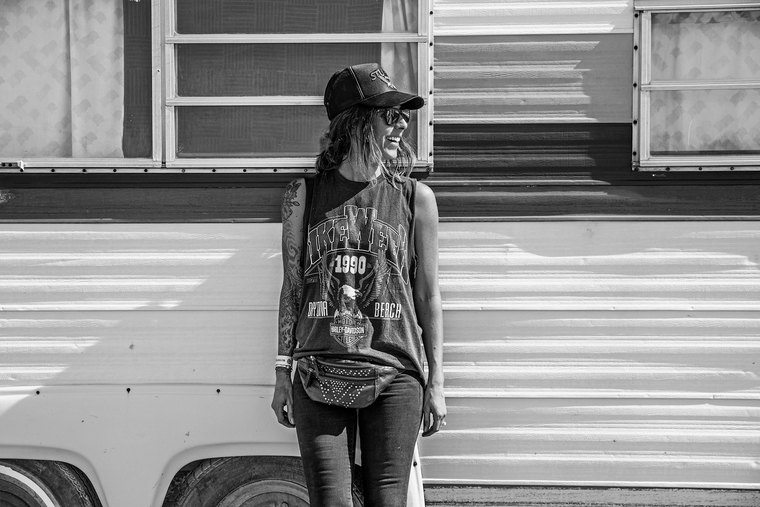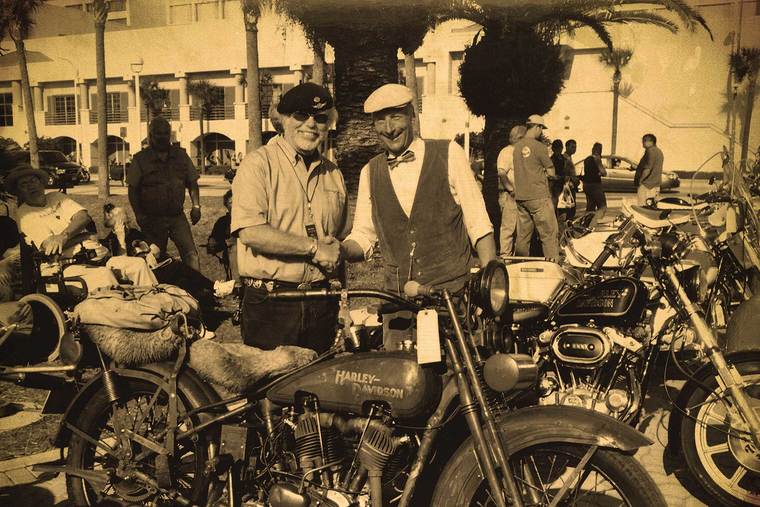Dream story
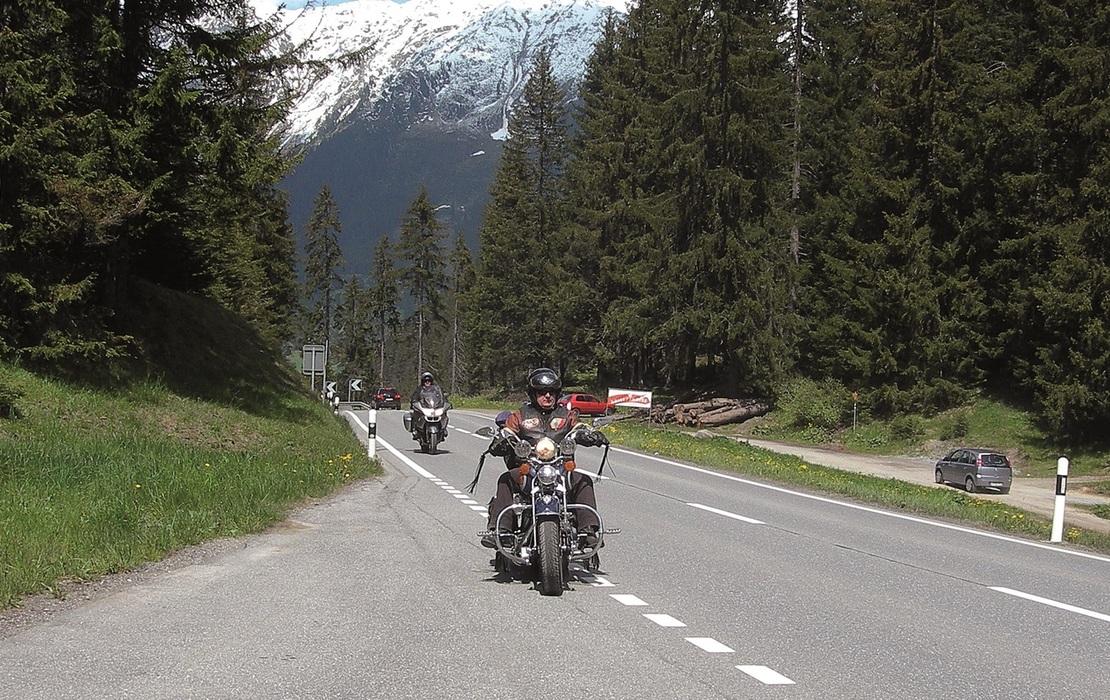
Roadbook story: France, Switzerland & Italy
It’s been a while since we completed the trip, but the excitement is still there – I still feel the buzz of every moment. Before the trip, six months were spent planning the journey, scouring web pages to compare hotels, services and prices, and studying routes. We couldn’t wait to get on the two Road King Classics and the Softail Springer and let the fun begin.
I bought my Road King in 2005, my first motorcycle, my first Harley-Davidson®. Ever since, after a few trips covering around 15,000km, I had been dreaming of a long journey like those I read about in Hog Tales®.
There were three of us: me, my friend Juan Carlos Gorría, whom I had met on my first day on the road with my Spiderman customised Road King, and JJ Maya, with his magnificent Springer with its peculiar cowboy seat. Pablo Neruda said that we should never stop being children, and, like children, we live with hope, and the three of us could not sleep with excitement in anticipation of the journey ahead.
With a turn of the key my Road King roared into life with the most heavenly harmony – the adventure had begun. I set off the afternoon before on a 500km solo leg from
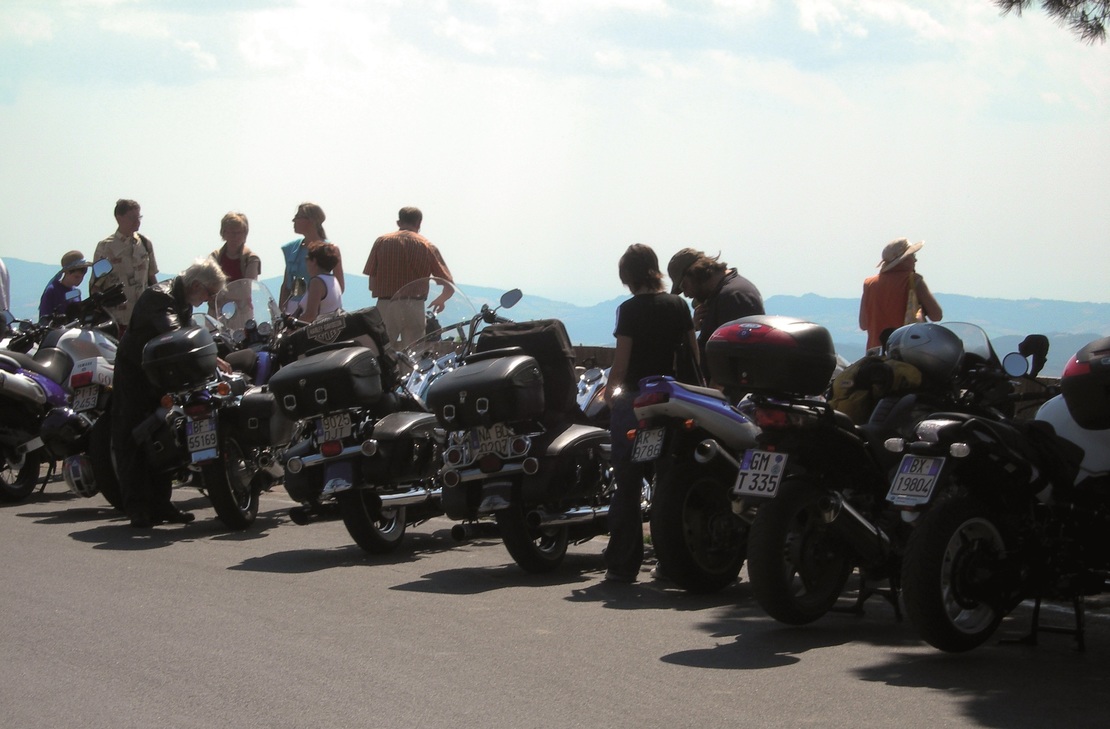
I spent the night in Jaca, in the Spanish Pyrenees, and awoke to a wonderful spring morning. I left Jaca at 8am to cross the
The journey to
JJ and Juan Carlos arrived five hours after me, their jackets spattered with insects and obviously tired after covering 700km in just over six hours. We had a relaxing evening of fine food and drink followed by an early night. In front of us lay 5,000km and 12 days to enjoy marvellous landscapes from the saddles of our Harleys®, crossing the Pyrenees, travelling through the French countryside, driving through the high peaks of
The first day of our adventure would see us face the longest leg of the trip that would take us across the easternmost part of

It was 8pm when we left for Grindelwald. We had toyed with two possibilities: first, to cross using the mountain route that links Aigle and
Night was drawing in and to crown it all, dark clouds appeared depositing the first drops of rain. Even here the magic of the landscape was surprising. Suddenly, in the middle of June, and in the space of barely 15 minutes, the spring countryside had given way within a few kilometres to a landscape with pockets of snow, cattle and typical mountain chalets. The night was well advanced and we were completely disorientated, even though our navigation systems told us the direction to our final destination – 150km away. It was now around midnight and had been threatening to rain for half an hour.
Near Gruyères, we stopped to study our position and to re-plan the route. Juan Carlos took the lead. Yet more narrow roads, with the road signs telling us that we were starting to climb up to the Jaunpass, the first pass at 1,500m and gradients of 11 per cent – what a nightmare! I remembered seeing this pass on the maps and in the books when planning the route, but we never thought we’d be going over it on the first night.
I had the feeling that we had missed the road up to Gstaad, but neither had we come across the motorway to
The climb was not all that complicated, although I stayed a little behind the others, who were setting a faster pace. Juan Carlos insisted that I take the lead position, but I preferred to stay more relaxed at the rear rather than to have the additional pressure of setting the pace in these mountainous conditions.
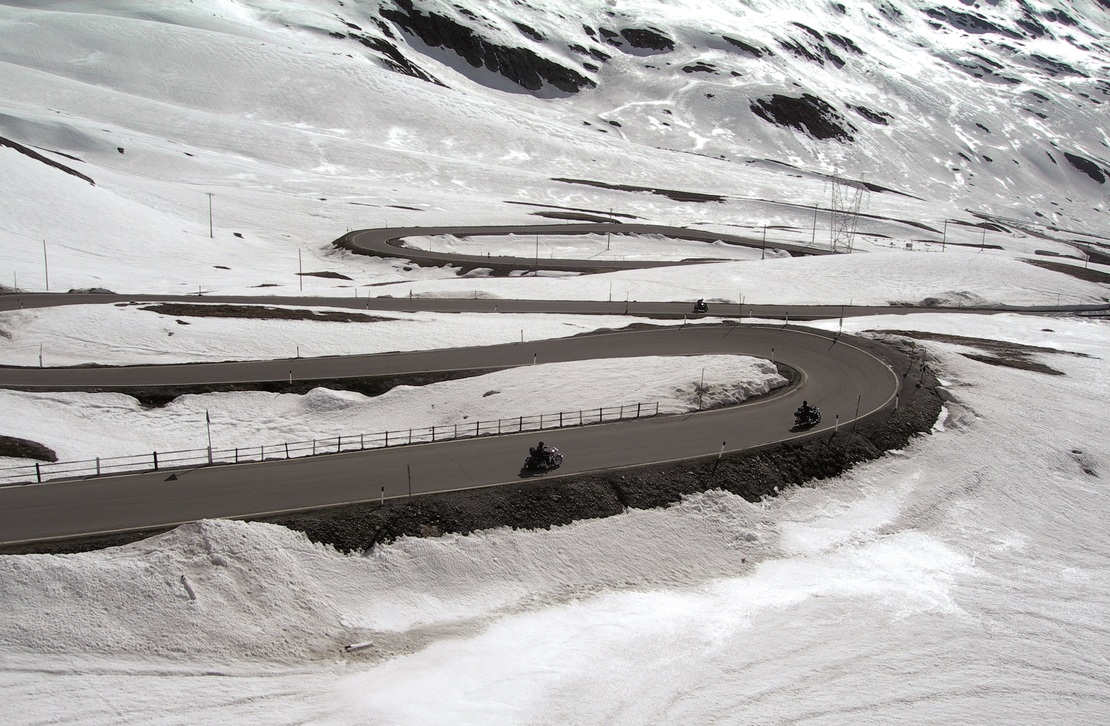
The descent promised to be impressive, and the kind of never-ending bends that I was not expecting to come across until we got to Stelvio were right here, three days early. At midnight, and after many hours in the saddle, it was quite a challenge, but one that I proposed to enjoy slowly, even as the rear lights of my companions drew away and almost disappeared beneath me. I could see the disbelieving eyes of the cattle on the other side of the fence, they must have been wondering what on earth these three Harleys were doing at this hour of the night at almost 1,500m… I was thinking the same thing. The GPS told us there was only 120km to go.
The important thing was to remain calm and enjoy the experience. I made my solo descent from the pass and arrived at
After more than 1,000km of motorway, passes and rain, the bikes were now in the garage for the next two days for a well- earned rest, which we would use not only to soak up the atmosphere of the Swiss mountains, but also for our own well- earned break to recuperate and enjoy a good rest at the foot of the fascinating Eiger.
The day dawned bright and sunny, showing off the Grindelwald valley in all its splendour: the still abundant snowfields and the typical alpine chalets dotted among the green meadows. I took a morning walk through the streets of Grindelwald to the station, before taking a train and cable car to the Piz Gloria (known as the Schilthorn).
The following day we made another excursion, this time in a delightful cogwheel train, to the Jungfraujoch, one of the highest peaks in
We had allowed two days to visit this part of
No less beautiful was the route we chose that took us through Klosters (1,179m), the Wolfgangpass (1,631m) and the Ofenpass (2,149m). We stopped at the Austrian border very close to Klosters before crossing the Flüelapass (2,383m) where we began to climb towards the Passo dello Stelvio on the frontier between
The precipitous slope and narrow road meant that caution was at the forefront of my mind. I wanted to take it gently and enjoy it, even stopping to photograph the frozen snowfields that, in the middle of June, lay around us. At the bottom we headed straight to Desenzano, on the southern

The following day, we left Desenzano for
The next day we visited
To see Sardinia at sunrise is to see the
Travelling the magnificent route that skirts the whole of the northern coast of Sardinia allows you to savour the cliffs and unspoiled beaches with fine white or pink sand that contrast with the emerald or turquoise sea at every turn. A paradise, punctuated with lovely villages, with a medieval character that would not have been out of place anywhere in
After lunch in Castelsardo, we continued the journey to Alghero, with a stop in Nuraghe di Palmavera, a first-class megalithic monument of impressive antiquity and state of preservation. No less impressive, however, was the fantastic view of the sunset over the Porto Conte bay from the Capo di Caccia, where the bar owner, who owns an Electra Glide, asked us to sign his visitors book – as he does all the bikers who pass through.
It was already around 8pm as we drove into the town of
The penultimate day of our journey dawned, and in about half an hour we had covered the coast road, which took us to Santa Teresa di Gallura. Taking it easy and enjoying the morning sun, we were exactly on time to catch the pretty ferry to the neighbouring French

The arrival by sea at Bonifacio in the south of the island is most spectacular, and from the ferry the passenger cannot avoid the feeling that he is a crew member from a bygone age, from a privateer seeking the shelter of one of these coves or inlets. We got off the ferry, ready to cross the island from Bonifacio to
On the recommendation of some people in Porto Vecchio, we were able to find a magnificent white sand cove at Solenzara, a few kilometres to the north. A good meal in La Dolce Vita, and then a gentle ride north, just short of 150km, for which we had a whole day. We enjoyed every second of it.
After a long tailback to get into the port, we got our bikes onboard an impressive ferry, which was to take us on an overnight crossing of almost nine hours to
We arrived at
I love my Harley more with every day that passes. Not just the bike itself, but everything involved with it, including the charming people. In a little short of 15 months, I have covered 22,000km.
On this tour through
I am very happy to own a Harley- Davidson, and to do what I enjoy doing most with it: eating up the kilometres, the landscapes, getting to know wonderful places and people, all the while enjoying the harmonious roar of my Twin-Cam as I ride.
By Julio Conde Estévez


